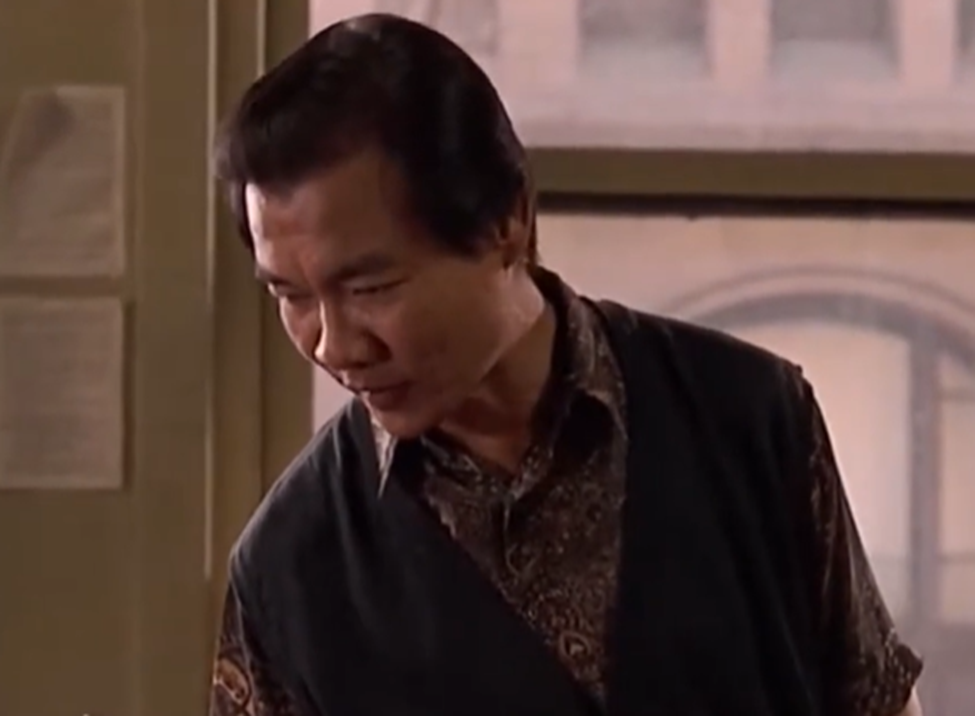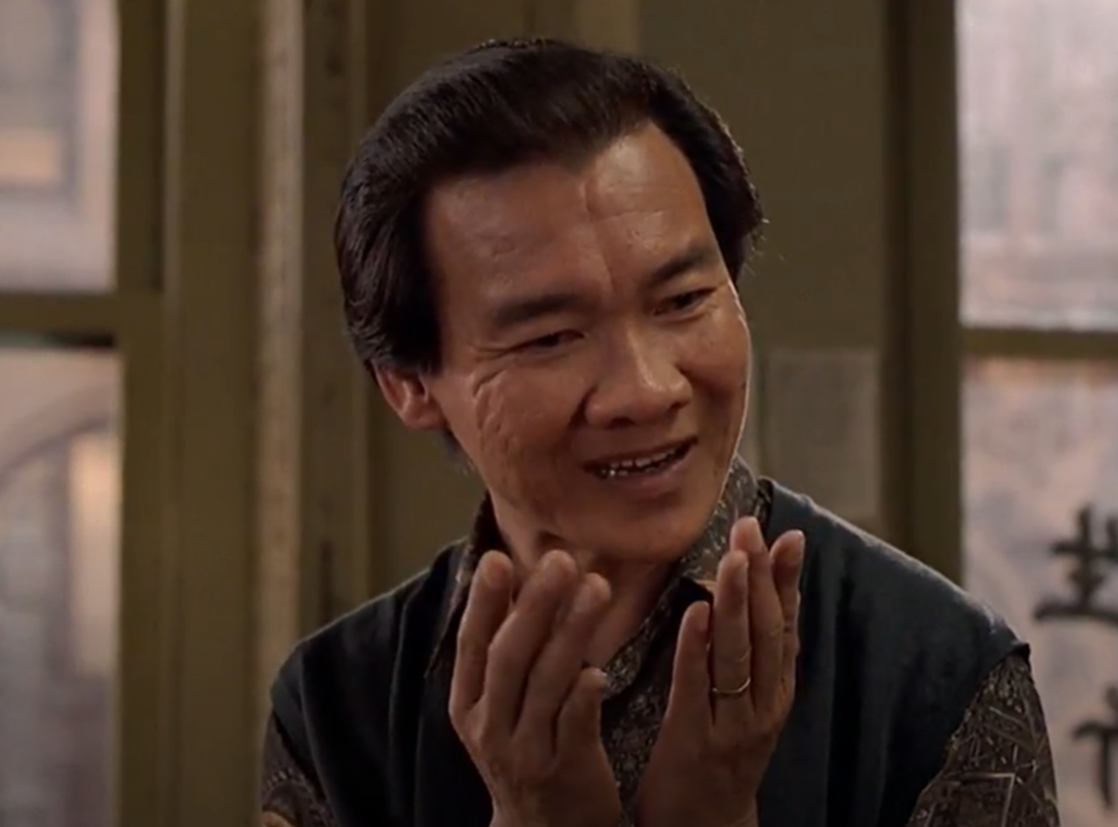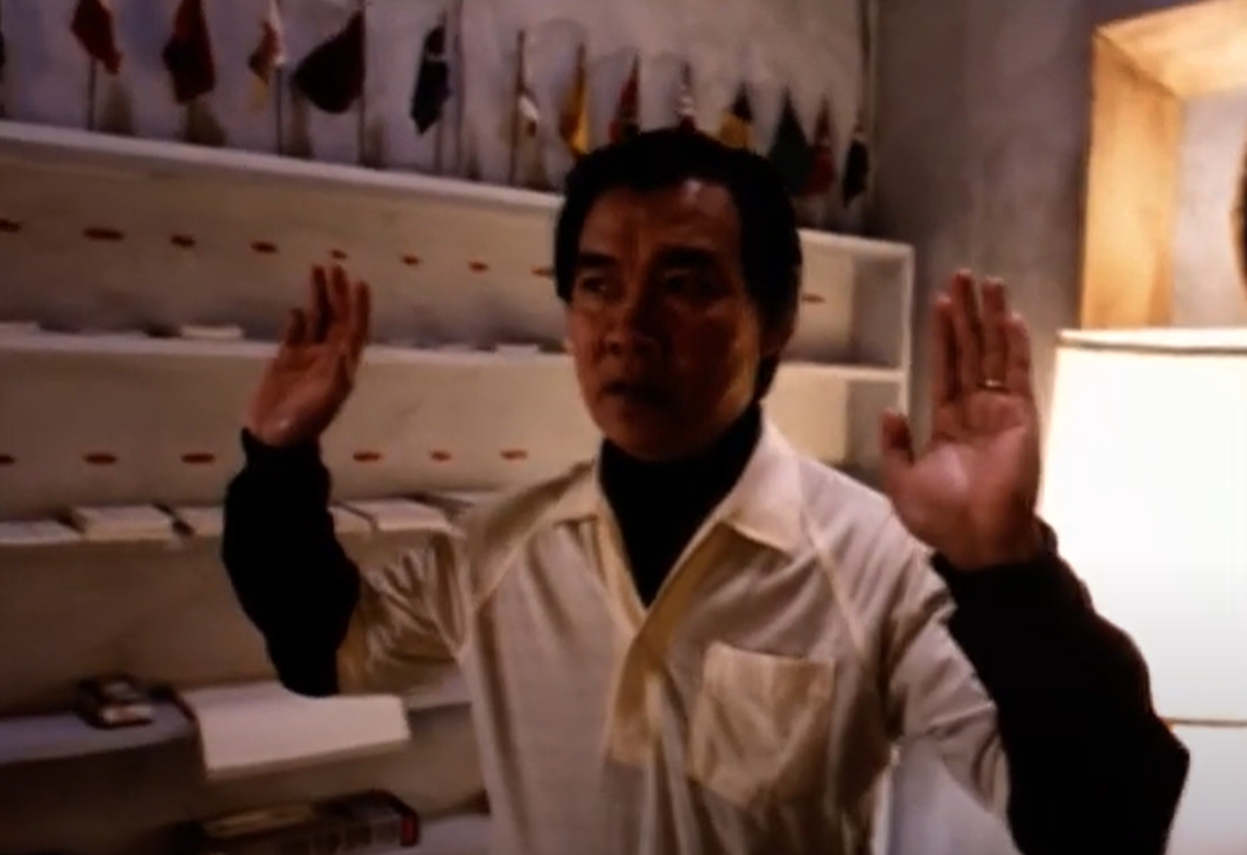From A Nightmare To Hollywood
Haing S Ngor is best known for his Oscar-winning performance in 1984’s The Killing Fields—but few know his harrowing backstory and unspeakably tragic end.

1. He Just Wanted To Help People
Born in 1940, Haing S Ngor grew up in a privileged family in the Cambodian village of Samrong Yong. While in his life, he would endure highs and lows of hard-earned achievements and unbearable suffering, he began his journey trying to help people.
2. He Went Into Medicine
Throughout his life, Ngor tried to influence the world for the better and help others, starting early on. Training in the medical field, he eventually specialized as both a gynecologist and obstetrician. Although he would stay in this line of work, fate had a cruel twist in store for him.
3. He Became A Soldier
As he furthered his career, Ngor didn’t limit his medical expertise to the general public. He later joined as a soldier in the Cambodian military, specifically as a medical officer. Even before this, though, he met someone very special.
4. He Met The Love Of His Life
For all the pain he would go through, Ngor found happiness early on in his life. While in medical school, he met Chang My Huoy, and it wasn’t long before the two married. Sadly, before long, something threatened the happiness they shared.
 Larry Bessel, Los Angeles Times, CC BY 4.0, Wikimedia Commons
Larry Bessel, Los Angeles Times, CC BY 4.0, Wikimedia Commons
5. He Faced A Terrifying Regime
As tensions rose in Cambodia, society overturned as a prominent army of dissidents seized power. In 1975, the Communist Party of Kampuchea—also known as the Khmer Rouge—took the country by force after a brutal civil conflict.
Among their atrocities, one of their strictest ideals spelled trouble for Ngor.
 Goldcrest Films International, The Killing Fields (1984)
Goldcrest Films International, The Killing Fields (1984)
6. He Hid Himself
The Khmer Rouge opposed several types of people, including most professionals and intellectuals. This anti-intellectualism led to many executions, so being a medical practitioner, Ngor had no choice but to hide his career, and even the fact that he wore glasses.
This didn’t keep his wife and him safe, however.
 Goldcrest Films International, The Killing Fields (1984)
Goldcrest Films International, The Killing Fields (1984)
7. He Lost His Home
When the Khmer Rouge took over, their drastic measures were swift. The regime enacted its “Year Zero” plan to erase all of Cambodia’s culture and customs in place of brand-new approved ones. Part of this was expelling millions from their homes, including Ngor and his wife.
But they didn’t stop at banishing them.
 Goldcrest Films International, The Killing Fields (1984)
Goldcrest Films International, The Killing Fields (1984)
8. He Ended Up In A Concentration Camp
Along with the millions that the Khmer Rouge had deemed enemies, Ngor and his wife found their suffering only getting worse. After being removed from their home, the Khmer Rouge placed the two in a concentration camp, along with several members of Ngor’s family.
During this, he kept up his facade.
 Goldcrest Films International, The Killing Fields (1984)
Goldcrest Films International, The Killing Fields (1984)

Sign up to our newsletter.
History’s most fascinating stories and darkest secrets, delivered to your inbox daily. Making distraction rewarding since 2017.
9. He Still Hid Who He Was
Even while imprisoned, Ngor and his family were in danger of his captors finding out he was a physician. This never happened, as even though they interrogated him three times, he never revealed his true career and maintained a facade that he was an uneducated taxi driver.
His will didn’t waiver, and he held on to something.
 Goldcrest Films International, The Killing Fields (1984)
Goldcrest Films International, The Killing Fields (1984)
10. He Made A Promise
Amid this misery, Ngor and his then-pregnant wife hung on to each other. They had no idea what would happen, or whether they would even survive all of this. However, Ngor promised his wife that he would tell the world about what was happening there.
As their imprisonment went on, it was one crisis after another.
 Goldcrest Films International, The Killing Fields (1984)
Goldcrest Films International, The Killing Fields (1984)
11. He Had An Emergency On His Hands
While incarcerated, Ngor and his wife met an inevitable predicament. Chang My-Huoy went into labor, and adding to the list of horrors and injustice, the birth came with several complications. She and Ngor faced a cruelly impossible situation.
 Goldcrest Films International, The Killing Fields (1984)
Goldcrest Films International, The Killing Fields (1984)
12. He Made An Impossible Choice
When Chang My-Huoy’s labor encountered complications, Ngor had the skill and education to help, but could not. His wife knew that if Ngor saved her, it would out him as a doctor and lead to the execution of them all. In the end, she and their unborn child tragically passed.
Although Ngor was devastated, he survived.
 Goldcrest Films International, The Killing Fields (1984)
Goldcrest Films International, The Killing Fields (1984)
13. He Did What He Had To Do
Motivated by his promise and an indomitable will, Ngor survived for years in the Khmer Rouge’s camp. Although he couldn’t be outright with his education, it did keep him alive. Denied any proper food, he sustained himself on the unthinkable—all kinds of insects and arachnids.
This wouldn’t last forever—but before it ended, countless people suffered.
 Goldcrest Films International, The Killing Fields (1984)
Goldcrest Films International, The Killing Fields (1984)
14. He Grieved For His People
By the time the Khmer Rouge fell, their impact on the country had cemented itself. Before the Vietnamese army successfully forced them from their seat of power in 1979, a catastrophic 2 million people were estimated to have met their demise at the regime’s hand.
Ngor and his niece were not among them.
 Goldcrest Films International, The Killing Fields (1984)
Goldcrest Films International, The Killing Fields (1984)
15. They Made It To Safety
Having escaped after the army dethroned the Khmer Rouge, Ngor and his niece—Sophia Ngor Demetri—made the trek to freedom. Traveling on foot, the two journeyed to Thailand and found a refugee camp run by the Red Cross. As they recovered, Ngor once again worked as a doctor.
But they didn’t stop there.
 Goldcrest Films International, The Killing Fields (1984)
Goldcrest Films International, The Killing Fields (1984)
16. They Traveled Across The World
Wanting to put as much space between them and everything they had endured, Ngor and his niece moved entire continents. They traveled to the US in 1980, finding a place to settle in Los Angeles.
They had made it to a new home, but he still had to pay the bills.
17. He Took What He Could
Although Ngor never again kept his education a secret, he didn’t return to practicing medicine. When he began living in Los Angeles, he took work as a security guard. In a surprisingly positive turn of fate, he was about to have a once-in-a-lifetime encounter.
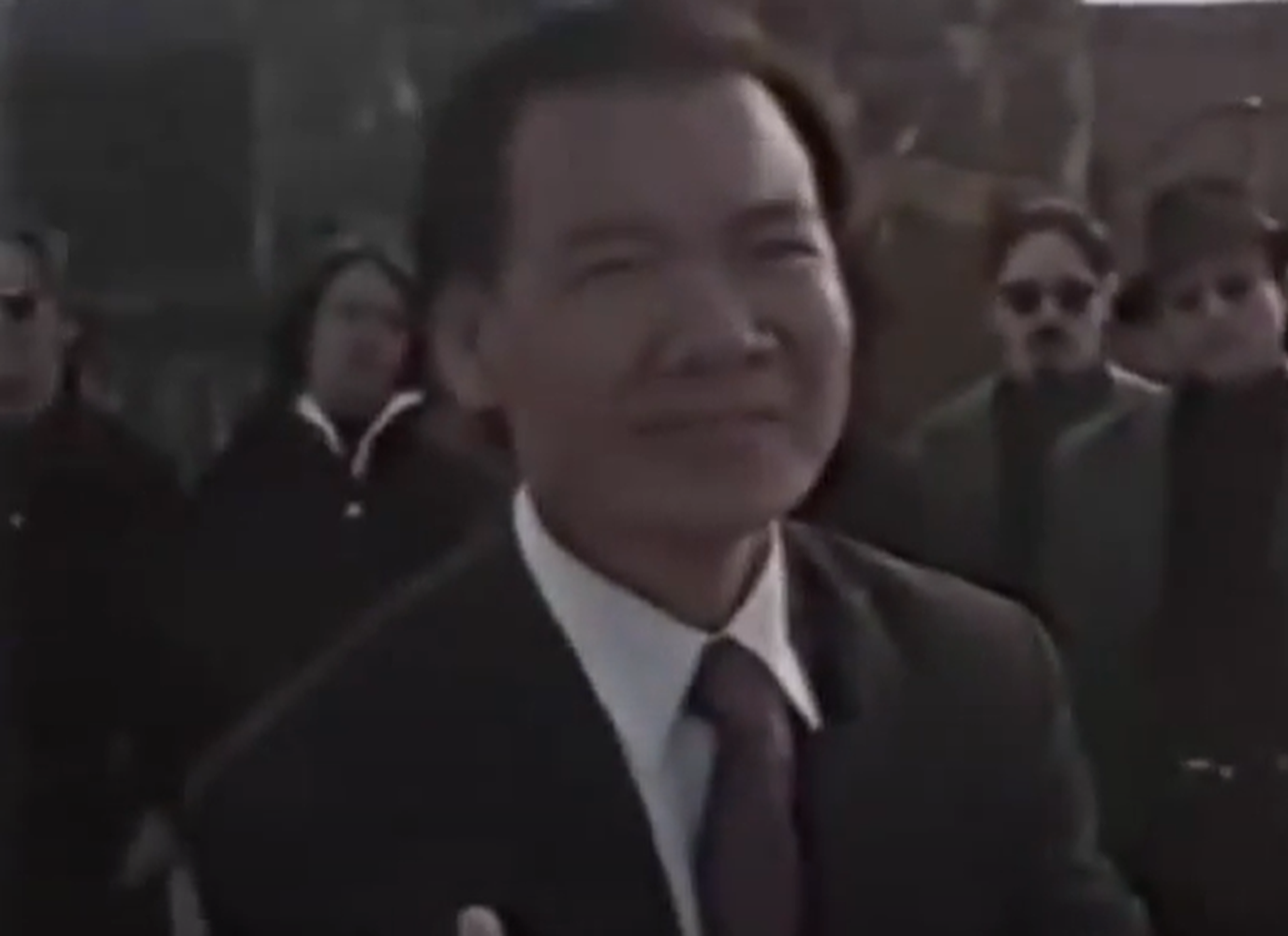 Universal, Vanishing Son III (1994)
Universal, Vanishing Son III (1994)
18. He Was Scouted
Most likely when he least expected it, someone approached Ngor with an opportunity to change his life positively. While at a wedding, casting director Pat Golden approached Ngor with an offer to audition for a film about the genocide in Cambodia.
Still, he wasn’t the only one with no acting experience.
19. He Had No Acting Experience
The director of The Killing Fields, Roland Joffé, wasn’t looking for just any star for his film. According to actor Julian Sands, Joffé was looking out for actors with little to no experience, trying to portray the story with fresh eyes.
Beyond his lack of acting experience, Ngor was the ultimate choice for the role.
 5of7, CC BY-SA 2.0, Wikimedia Commons
5of7, CC BY-SA 2.0, Wikimedia Commons
20. He Was The Perfect Choice
Later on, after hearing Ngor’s life story, director Roland Joffé knew he was perfect for his movie. In Julian Sands’ words, Joffé respected and acknowledged that Ngor had practically been acting to survive—and that had he not done such a good job, he wouldn’t be there.
But Ngor wasn’t yet on board.
 Franek Vetulani, CC BY-SA 3.0, Wikimedia Commons
Franek Vetulani, CC BY-SA 3.0, Wikimedia Commons
21. He Was Hesitant
Despite what some may call the chance of a lifetime, it didn’t convince Ngor initially. When Pat Golden approached him, excitedly telling him about the film and the potential she saw in him as an actor, Ngor adamantly refused.
Still, his hesitancy wasn’t only out of modesty.
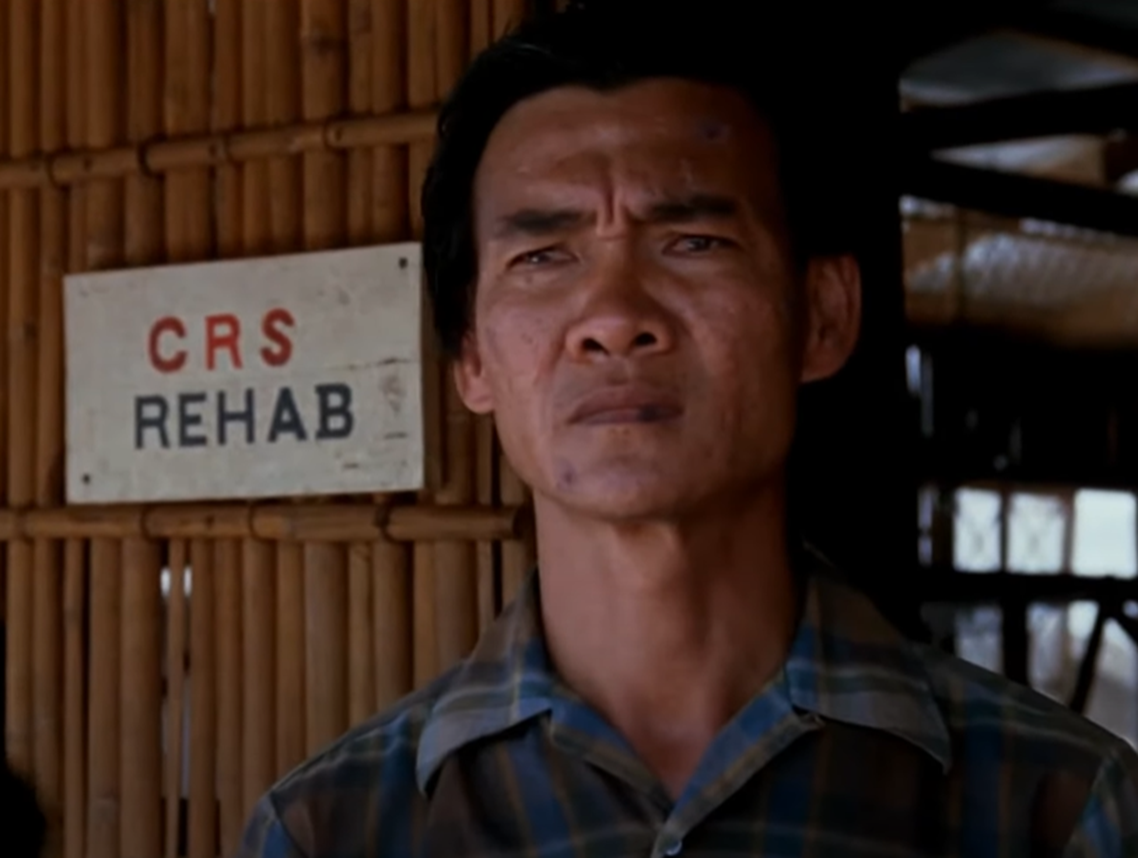 Goldcrest Films International, The Killing Fields (1984)
Goldcrest Films International, The Killing Fields (1984)
22. His Past Was Too Hard To Relive
Haing S Ngor was humble and had other priorities, but one larger reason kept him from auditioning. As it was depicting the very real horrors and trauma that Ngor himself had experienced, it was simply too much for him.
Unfortunately, the filmmakers were out of options.
 Goldcrest Films International, The Killing Fields (1984)
Goldcrest Films International, The Killing Fields (1984)
23. He Was Their Only Hope
Ngor’s refusal would have been a bit easier for the filmmakers to accept if they hadn't been so desperate. Sadly, since the Khmer Rouge executed many artists in their time, it was nearly impossible to find other Cambodian actors.
Eventually, he came to a decision.
 Goldcrest Films International, The Killing Fields (1984)
Goldcrest Films International, The Killing Fields (1984)
24. He Relented
After much deliberation and discussion with the casting director, Ngor finally decided. Despite the other things in his life taking precedence, he taped an audition and sent it to the filmmakers. Of course, his audition was practically unnecessary.
 Goldcrest Films International, The Killing Fields (1984)
Goldcrest Films International, The Killing Fields (1984)
25. He Was A Natural
Once Roland Joffé saw his audition tape, he was immediately convinced of Ngor’s talent. Ngor poured his heart and pain into his audition, proving his lack of professional acting experience was irrelevant.
Needless to say, Joffé had found his star.
 Goldcrest Films International, The Killing Fields (1984)
Goldcrest Films International, The Killing Fields (1984)
26. He Booked The Gig
Finally, after months of beating around the bush, Ngor got his big break. He was officially cast in Roland Joffé’s film alongside Julian Sands, Sam Waterston, and John Malkovich. Any other actor with his resume would be lucky if they got a background role, but not Ngor.
His role was bigger and much more personal.
 Goldcrest Films International, The Killing Fields (1984)
Goldcrest Films International, The Killing Fields (1984)
27. His Life Mirrored The Movie
In Roland Joffé’s film, the director cast Ngor to play someone whose life mirrored the rookie actor's. The role was Dith Pran, a real Cambodian photojournalist who had survived three terms in a concentration camp, before eventually escaping to Thailand, just like Ngor.
This allowed Ngor to draw on his experience—at a cost.
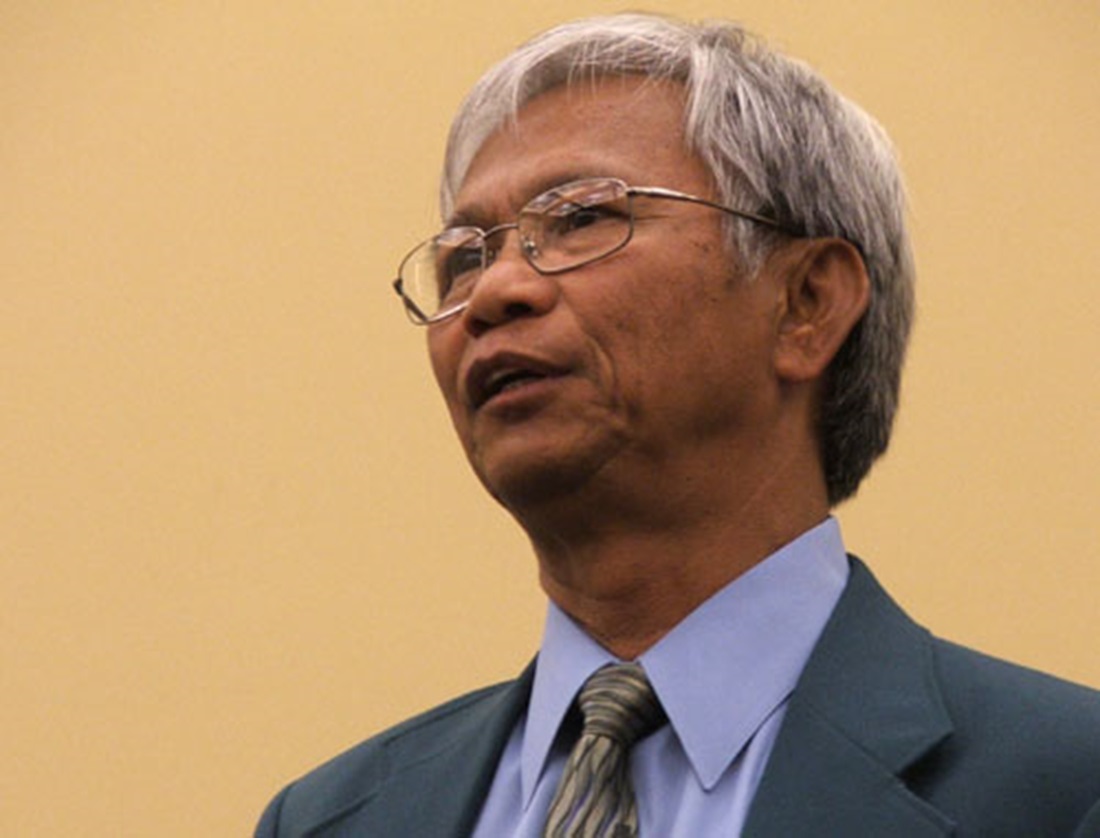 Robert Stewart, CC BY-SA 2.0, Wikimedia Commons
Robert Stewart, CC BY-SA 2.0, Wikimedia Commons
28. His Role Brought Back Memories
Actors put a lot into their roles, especially when acting from experience. As Ngor suspected, the returning trauma was nearly too much to handle. In a scene where he was held down and threatened by a teenage soldier, it became too real. His reaction was utterly heartbreaking, as he ultimately ran off the set.
It’s good that the film wasn’t occupying all of his time.
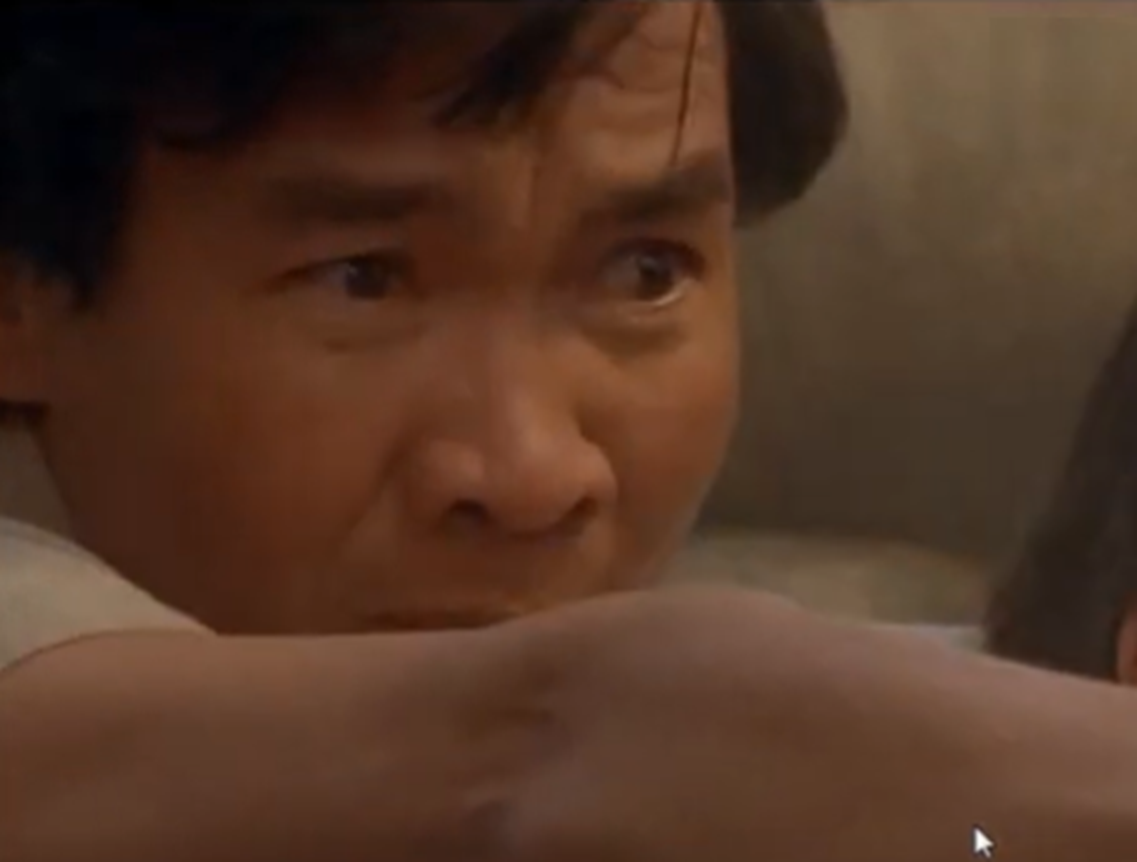 Goldcrest Films International, The Killing Fields (1984)
Goldcrest Films International, The Killing Fields (1984)
29. He Had Another Job
Before the film, Ngor had been working a different job to support him and his niece, which he didn’t stop even while in production. Shortly after settling in LA, Ngor found a career with a resettlement agency as a counselor for other refugees.
This didn’t mean that the film was unimportant to him, however.
 Goldcrest Films International, The Killing Fields (1984)
Goldcrest Films International, The Killing Fields (1984)
30. He Starred In A Movie That Changed Everything
The Killing Fields came out in 1984, and Ngor debuted his performance to the world. The film follows the true story of Sydney Schanberg, an American journalist who traveled to Cambodia to cover the conflict and befriended Dith Pran before helping him escape.
After its release, Ngor found himself in a much more public eye.
 Goldcrest Films International, The Killing Fields (1984)
Goldcrest Films International, The Killing Fields (1984)
31. His Performance Was Award-Worthy
Ngor’s performance as Dith Pran wasn’t only significant from a historical standpoint but it greatly impacted audiences worldwide. Naturally, when the 1984 Oscars season came around, the Academy nominated him for Best Supporting Actor.
He felt honored to attend the awards show, but needed to clear it with someone first.
 Myogaku Productions, The Dragon Gate (1994)
Myogaku Productions, The Dragon Gate (1994)
32. He Needed Time Off
Even after the film’s release and Ngor’s overnight rise to fame, he remained employed at the resettlement agency. Being the man he was, Ngor asked his boss for time off to attend the Academy Awards, which they granted.
Even then, he nearly missed the award.
33. He Almost Didn’t Make It
Despite achieving star status, Ngor dealt with mundane issues—like traffic. On the way to the Oscars, he and his niece experienced the unfortunate combination of being late and stuck in traffic. Thankfully, they arrived at the show just as they announced him as the winner.
While it was already a great achievement, it held even more significance.
34. He Broke Ground
Most amateur actors dream of getting an award for their work, but beyond that, Ngor achieved something more. He was the first actor of Asian heritage to win Best Supporting Actor.
Along with these honors, the award gave him another accolade.
35. He Was One Of Two
As an actor with zero previous work, Ngor found himself in a dream situation. Along with receiving an award that commemorated his amazing performance, he had the privilege of being one of two amateur actors in history to win an Oscar—along with Harold Russell.
Of course, the film didn’t only do well at the Academy Awards.
36. He Kept Winning Awards
As awards season continued, the trophies just kept coming Ngor’s way. Beyond the Oscars, he also won Best Supporting Actor at the Golden Globes. Additionally, he received two BAFTAs, one of which was Most Promising Newcomer to Leading Film Roles.
He enjoyed these honors, but they weren’t the purpose of his performance.
37. His Reason For Doing It
Although many would naturally enjoy all the fame, Ngor had a deeper purpose in mind for the film. After its release, he stated that his reason had always been to show the world what had been happening in Cambodia. In the end, he fulfilled his promise to his wife.
Even though he felt it had gotten the point across, Ngor admitted the film had some discrepancies.
 Carol Schneider Productions, In Love and War (1987)
Carol Schneider Productions, In Love and War (1987)
38. His Film Wasn’t Completely Accurate
Nearly every biopic has some inaccuracies, as is natural when a true story is translated into film. In this film’s case, Ngor never said they embellished anything. On the contrary, his biggest critique was that the film was actually too tame compared to the true events.
While he was receiving these awards, he still had bills to pay.
 Goldcrest Films International, The Killing Fields (1984)
Goldcrest Films International, The Killing Fields (1984)
39. Things Went Back To Normal
Rather than launching into a glamorous career in show business, Ngor was content with what he had already been doing. As the awards season went on, he happily returned to working as a counselor.
Thankfully, he was able to make a more significant change.
 Scotti Brothers Pictures (I), The Iron Triangle (1989)
Scotti Brothers Pictures (I), The Iron Triangle (1989)
40. He Found A New Home
Having been imprisoned within his own country and driven away afterward, Ngor was able to start a new life in America. It was obviously challenging, but it became much easier when he was granted US citizenship in 1986.
Little did he know, his life in America would one day take a horrifyingly dark turn.
 Larry Bessel, Los Angeles Times, CC BY 4.0, Wikimedia Commons
Larry Bessel, Los Angeles Times, CC BY 4.0, Wikimedia Commons
41. He Wrote About His Life
Whether or not the film depicted the true severity of the Cambodian genocide, Ngor had his chance to talk about it. In 1987, he released an autobiography called Haing Ngor: A Cambodian Odyssey. He wrote about his life and everything he suffered through from the Khmer Rouge.
He also revealed his feelings about a more recent event.
42. He Had Doubts About His Achievement
Ngor didn’t agree with the Academy’s choosing him for Best Supporting Actor. He had worked with John Malkovich, who received a nomination for a different movie—Places in the Heart. Ngor wrote in his autobiography that he believed Malkovich should have won.
Nevertheless, he had more in mind for show business.
 Elena Ternovaja, CC BY-SA 3.0, Wikimedia Commons
Elena Ternovaja, CC BY-SA 3.0, Wikimedia Commons
43. He Wasn’t Done
After the film, Ngor would continue working on screen when he could. Appearing in both films and television, he mostly played characters in the middle of conflicts or recovering from them. For all his success, Ngor didn’t keep it to himself.
 Carol Schneider Productions, In Love And War (1987)
Carol Schneider Productions, In Love And War (1987)
44. He Started Giving Back
Ngor had told the world about what was happening in Cambodia, but felt he hadn’t done enough. So, alongside his friend Jack Ong, he established the Haing S Ngor Foundation. It had the most touching purpose—to provide funds for Cambodian aid.
As it happened, they were able to help out.
 Westsidebill, Wikimedia Commons
Westsidebill, Wikimedia Commons
45. He Became A Humanitarian
Through his organization, Ngor helped those who continued to struggle. They funded an elementary school, a sawmill, and other projects that brought jobs to the families who remained in Cambodia. Despite all his humanitarian efforts, he recognized how he got the opportunity to do it all.
In fact, he used it to the cause’s advantage.
 Universal, Vanishing Son III (1994)
Universal, Vanishing Son III (1994)
46. He Took It Everywhere
After winning his Oscar and being given a platform to speak, Ngor cleverly used that fame to make people listen. He also had a unique strategy up his sleeve. Ngor often brought his award to speaking events and passed it to anyone who wanted to hold it, using the spectacle of it all to keep people’s interest.
Even though he used it this way, he stated that the award didn’t belong to him.
 Myogaku Productions, The Dragon Gate (1994)
Myogaku Productions, The Dragon Gate (1994)
47. He Gave His Oscar To Her
Eventually, Ngor’s niece—Sophia Ngor Demetri—came into possession of his Oscar. This was more than a bequeathment, as Ngor had reflected on the treacherous journey he and his niece had made, and he made it clear that the award was for her.
Tragically, the violence Ngor endured would once again rear its ugly head.
 Carol Schneider Productions, In Love And War (1987)
Carol Schneider Productions, In Love And War (1987)
48. He Met A Tragic End
Once again facing the cruel injustice of the world, Haing S Ngor passed in 1996. Outside of his home, he was held up by assailants and eventually shot, perishing that day. This marked the first actor in Ngor’s debut film to meet a grim end.
Sadly, he wasn’t the only one.
 Scotti Brothers Pictures (I), The Iron Triangle (1989)
Scotti Brothers Pictures (I), The Iron Triangle (1989)
49. He Was One Of Three
Three actors in The Killing Fields ultimately met their demise in particularly grievous ways, but Ngor was the first. In the years since his passing, Spalding Gray took his own life and Julian Sands perished in a deadly hiking accident.
The cause of Ngor’s passing, however, was three individuals.
50. He Faced Down Gangsters
After an investigation, law enforcement charged three young men with the attack that caused Ngor’s demise. Jason Chan, Indra Lim, and Tak Sun Tan were all members of the Los Angeles gang, the “Oriental Lazy Boyz”.
Even though they were young, this wasn’t their first encounter with the law.
51. His Assailants Had A Shocking History
All three perpetrators had a history with the wrong side of the law, but nothing like this. Previously, while similar things like pilfering jewelry and purses were on their records, this was the first time any of them were charged with taking someone’s life.
Now that they received charges, their trial proceeded. But this was only the beginning.
 Scotti Brothers Pictures (I), The Iron Triangle (1989)
Scotti Brothers Pictures (I), The Iron Triangle (1989)
52. They Were All Tried
While the court tried all three of the assailants together, the law treated each of their cases individually. Rather than present their cases all at once, each perpetrator was heard by separate juries. During the trial, both sides argued over the motive.
53. He Possibly Refused
A leading theory was that a robbery had caused Ngor’s demise. This suggested that he had given his Rolex to the thieves, but when they demanded the locket containing a picture of his late wife, he staunchly refused. The theory stated that this caused the thieves to shoot him.
Though this may have been the case, others believed something even more sinister.
54. They Might Have Put A Hit On Him
Another theory offered by the defense was that his traumatic past and outspoken activism caught up to him. This hypothesis suggested that the three assailants hadn’t been the perpetrators, and that Khmer Rouge sympathizers had shot Ngor instead.
To make things worse, a significant voice bolstered this theory.
 Universal, Vanishing Son II (1994)
Universal, Vanishing Son II (1994)
55. The Claim Of A Madman
The idea that the Khmer Rouge was somehow behind it all was supported by one of its members himself. A former official of the regime named Kang Kek Iew stated that Ngor had been shot on the orders of their leader.
Still, his word wasn’t exactly ironclad.
 Universal, Vanishing Son III (1994)
Universal, Vanishing Son III (1994)
56. No One Believed Him
Although Kang Kek Iew said that Ngor had been taken out on Khmer Rouge orders, nobody truly took it seriously. Although Iew—also known as Comrade Duch—was a high-ranking official in the regime, many often called him crazy.
At the same time, a few details leaned away from a robbery gone wrong.
57. He Had So Much Cash On His Person
A glaring detail contradicted the theory that it had simply been a botched robbery—he had barely anything stolen. The would-be thieves had not checked his pockets, leaving him with around $3,000 cash. They also hadn’t stolen his Mercedes, parked nearby.
One specific piece of his belongings fueled an even more intriguing argument.
58. He Wore It Close To His Heart
The crux of the failed robbery theory was that Ngor had refused to give his locket, which raised some questions. He usually wore the locket under his clothes, which wouldn’t have been visible to the assailants. Even more curiously, the locket was never found. Ngor’s niece was certainly worried about the other prospect.
 Carol Schneider Productions, In Love and War (1987)
Carol Schneider Productions, In Love and War (1987)
59. She Was Terrified For His Life
Ngor’s niece, Sophia Ngor Demetri, later reacted to the political hit theory. She stated that she had always been terrified it would happen because those involved in the Khmer Rouge were still around. Ngor remained outspoken, and Demetri knew it was unsafe.
Despite all the theories, the trial of the three gang members eventually came to a close.
 Universal, Vanishing Son (1994)
Universal, Vanishing Son (1994)
60. They Were Handed A Verdict
Two years after Ngor’s passing, in 1998, the three alleged thieves received their verdict. All three were found guilty, and in an eerie coincidence, it was the same day that the demise of the Khmer Rouge’s leader—Pol Pot—was confirmed.
Of course, this verdict came with consequences.
61. They Were Sentenced
At the end of it all, the courts gave the three perpetrators their respective sentences. They gave Jason Chan a life sentence without parole, Indra Lim received a sentence of 26 years to life, and Tak Sun Tan was sentenced to 56 years to life, whether the motive was truly a robbery or not.
On that note, Ngor’s niece felt satisfied with the results.
62. She Believed The Courts
Although she had worried about her uncle’s safety in life, Demetri was able to find closure in the verdict. She would later tell Jack Ong that despite the arguments against it, she took the original conviction from the trial as fact.
Despite the court’s ruling, one of the assailants tried to get out of it.
63. He Filed A Petition
Six years after he was found guilty, Tak Sun Tan petitioned for habeas corpus, meaning that he was arguing for his own unlawful imprisonment. Surprisingly, the law granted this, as it was found that the prosecutors had provided false evidence to sway the jury.
It still didn’t go as he wanted.
64. He Had Crushed Hopes
While Tak Sun Tan may have succeeded in getting his petition granted, it wasn’t that way for long. The following year, the court rescinded its decision to grant habeas corpus and decided to stand by its original conviction.
Following the trial, Ngor became a lot more well-known.
 Universal, Vanishing Son (1994)
Universal, Vanishing Son (1994)
65. Suddenly Everybody Knew Him
There was a bizarre and ultimately unfortunate product of Ngor’s demise—an influx of Cambodian people claiming to know him personally. This was all to stake claim over his assets, with one woman even saying that Ngor had married her after settling in Los Angeles.
Of course, one man who actually knew him had some things to say.
66. His On-Screen Counterpart
With all of his family and friends talking about Ngor, one person was possibly overlooked. Photojournalist Dith Pran, whom Ngor played in his debut film, felt very close to the late actor. He would later say that they were like twins and that he felt alone after Ngor’s passing.
As evidenced, everyone loved Ngor for his caring and generous nature.
 Robert Stewart, CC BY-SA 2.0, Wikimedia Commons
Robert Stewart, CC BY-SA 2.0, Wikimedia Commons
67. He Had Done What He Set Out To Do
While Ngor no doubt wanted to do more, he was somewhat content by the time he passed. Shortly after the release of his debut film, he stated, "If I die from now on, OK! This film will go on for a hundred years".
Needless to say, his dream was not to be an actor.
 Scotti Brothers Pictures (I), The Iron Triangle (1989)
Scotti Brothers Pictures (I), The Iron Triangle (1989)
68. His Acting Was Secondary
Ngor most likely enjoyed acting in movies and TV, but a love of the craft was not why he did it. In his view, he acted almost solely to raise funds for his humanitarian work and speak about the events in Cambodia.
This is even more evidenced by how he chose to live.
69. He Was A Humble Man
Although he acted in several other roles, it was clear that Ngor wasn’t trying to become a big movie star. According to Jack Ong, while Ngor bought some luxuries, he didn’t live a lavish lifestyle. He wasn’t massively wealthy and was content to live in a tiny apartment.
Still, he certainly used his fame to his advantage.
 Universal, Vanishing Son II (1994)
Universal, Vanishing Son II (1994)
70. His Award Was Well-Used
Whether it was being passed to starry-eyed fans or brought to fundraising events, Ngor certainly didn’t hide his Oscar away. Even though he wasn’t in it for fame and glory, Ngor appreciated the award. After his passing, his niece found the Oscar in his apartment, noting that the gold plating had nearly all worn off.








